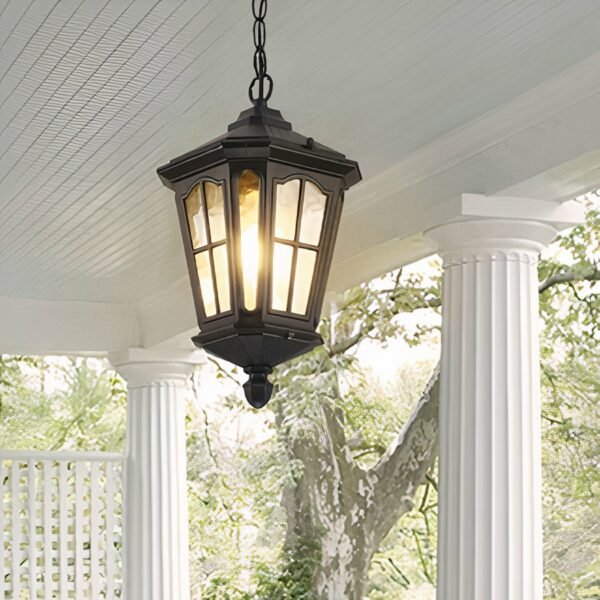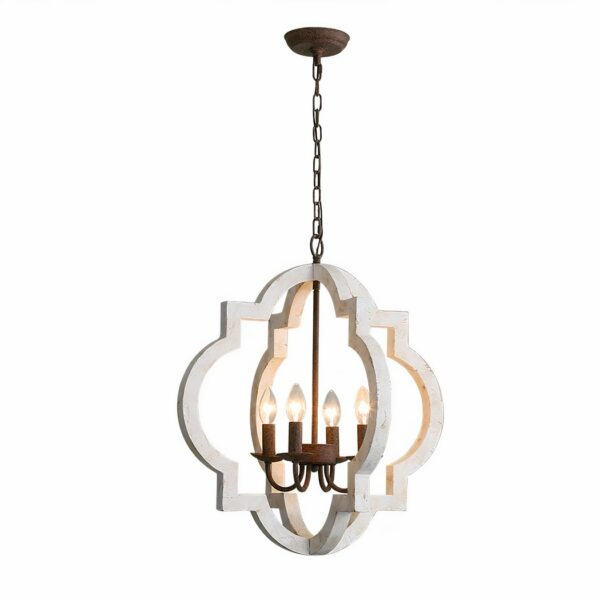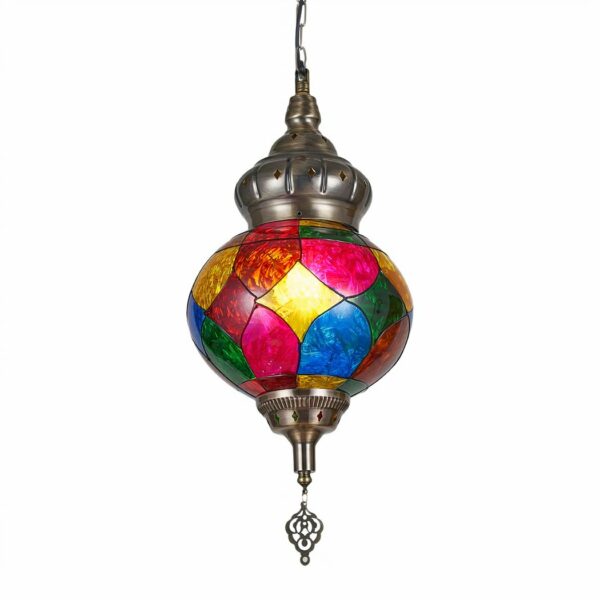Showing all 3 results
Showing all 3 results
The evolution of chandeliers through time
The historical importance of antique chandeliers in lighting and decoration
Antique chandeliers have played a crucial role in the history of lighting and interior design. Since their first appearance, they have been symbols of status and luxury, illuminating the homes of the rich and powerful. Beyond their practical lighting function, these chandeliers were artistic expressions, representing the artistic trends and techniques of their time. Their design and execution reflected technological advances and changing tastes, making antique chandeliers witnesses to social and cultural history. They evolved from simple iron candlesticks to ornate crystal masterpieces, each era bringing its own unique touch in terms of design and materials.
Markable styles and eras in the history of chandeliers
The history of chandeliers is marked by a diversity of styles and eras, each reflecting the cultural and artistic influences of its time. The Baroque style, for example, is characterized by opulent, richly decorated chandeliers, typical of 17th-century palaces and churches. The Victorian era saw the emergence of more elaborate chandeliers featuring crystals and precious metals. The early 20th century ushered in the Art Deco style, with chandeliers featuring clean, geometric lines. These different periods show how chandeliers evolved not only as functional objects, but also as art pieces influencing and reflecting the decorative trends of their time, as with the antique crown-shaped crystal chandelier.
Artisanship and materials of antique chandeliers
The role of brass, bronze, and crystal in antique chandeliers
Brass, bronze and crystal play significant roles in the design of antique chandeliers, each bringing its own unique qualities. Brass, often used for its strength and ease of casting, gives chandeliers a warm golden color and lasting brilliance. Bronze, meanwhile, is prized for its robustness and distinct patina, giving chandeliers a darker, often more ornate appearance. Crystal, introduced later, revolutionized chandelier aesthetics with its brilliance and ability to refract light. These materials are not limited to their functionality; they also symbolize luxury and opulence, making antique chandeliers statement pieces in the spaces they adorn.
Diversity of design and form in antique chandeliers
The diversity of designs and forms in antique chandeliers testifies to the creative wealth of past eras. From simple multi-armed structures to more complex and artistic constructions, these chandeliers vary greatly in terms of design. Some feature symmetrical forms with meticulous detail, while others adopt more asymmetrical, free-form approaches. Stylistic influences, whether Baroque, Rococo, Victorian or Art Nouveau, are evident in the motifs, ornamentation and overall structure of the chandeliers. This diversity reflects not only the technical advances of each period, but also the evolution of aesthetic tastes, making each antique chandelier a window on the artistic and cultural past.
Integration of antique chandeliers into modern decor
Tips for integrating a 3-hanger chandelier into contemporary decor
Integrating a 3-hanger chandelier into a contemporary setting can add a touch of character and elegance. For a harmonious balance, choose a central location, such as above a dining table or in an entrance hall, where the chandelier can serve as a focal point. Make sure the size of the chandelier is proportionate to the space to avoid visual overload. Play with contrasts by pairing the chandelier with modern elements, such as sleek furniture or contemporary artwork, to create a dialogue between old and new. Finally, consider the room’s ambient lighting so that the chandelier complements the whole without dominating.
Harmonizing antique chandeliers with modern interiors
Harmonizing antique chandeliers with modern interiors requires a balance between respect for authenticity and integration into a contemporary context. To achieve this, select chandeliers that contrast in a complementary way with the modern lines of your space, such as curved chandeliers in rooms with straight, minimalist lines. In a large room, a Oriental chandeliercan make a beautiful combination with an antique chandelier.
The color and finish of the chandelier can also play a role: a bronze or brass chandelier can add warmth to a neutral color palette. Use lighting to highlight the chandelier’s unique features, such as sculpted details or crystal pendants. Finally, don’t hesitate to mix different styles of furniture and accessories to create a dynamic, personalized space, where the antique chandelier becomes a centerpiece connecting past and present.
Preserving the beauty of antique chandeliers
Restoration and maintenance techniques for antique chandeliers
Restoration and maintenance of antique chandeliers require specific techniques to preserve their original beauty while maintaining their functionality. Restoration can include careful cleaning of metal and crystal components, using gentle solutions to avoid damaging delicate materials. It is important to repair damaged parts of the luminaire using original techniques and materials. For example, welding of metal parts must be carried out with care to preserve the structural integrity of the chandelier. Regular maintenance, including dusting and gentle polishing, is essential to maintain the lustre of the chandelier. For very old or valuable chandeliers, it is advisable to consult a professional restorer.
Replacement and care of internal parts such as wires and bulbs
Replacing and caring for the internal parts of antique chandeliers, such as wires and bulbs, are crucial to their proper functioning and safety. Older wires often need to be replaced with modern ones to meet current safety standards. This process should be carried out by a qualified electrician to ensure that the wiring is correct and safe. When it comes to bulbs, we recommend using energy-saving lamps that produce less heat to avoid damaging sensitive parts of the chandelier. When replacing bulbs, choose styles that complement the aesthetics of the chandelier, such as filament bulbs for a more authentic look. Regular maintenance of electrical connections and careful replacement of parts will ensure that the chandelier continues to operate reliably and safely.
FAQ on antique chandeliers:
How to care for and clean an antique chandelier:
Maintenance depends on the material. In general, dust regularly with a soft, dry cloth, and clean crystal or glass elements with a mild solution. Avoid harsh chemicals that could damage metal or finishes.
What are the common challenges when installing an antique chandelier?
Challenges include adapting the chandelier to modern ceilings, the weight of the chandelier which may require additional support, and integrating old wiring with current electrical systems.
Where is the best place to place an antique chandelier in a home?
It depends on the size and style of the chandelier. Common locations include living rooms, dining rooms and entrance halls. Choose a place where the chandelier can be a focal point without being obstructed.


